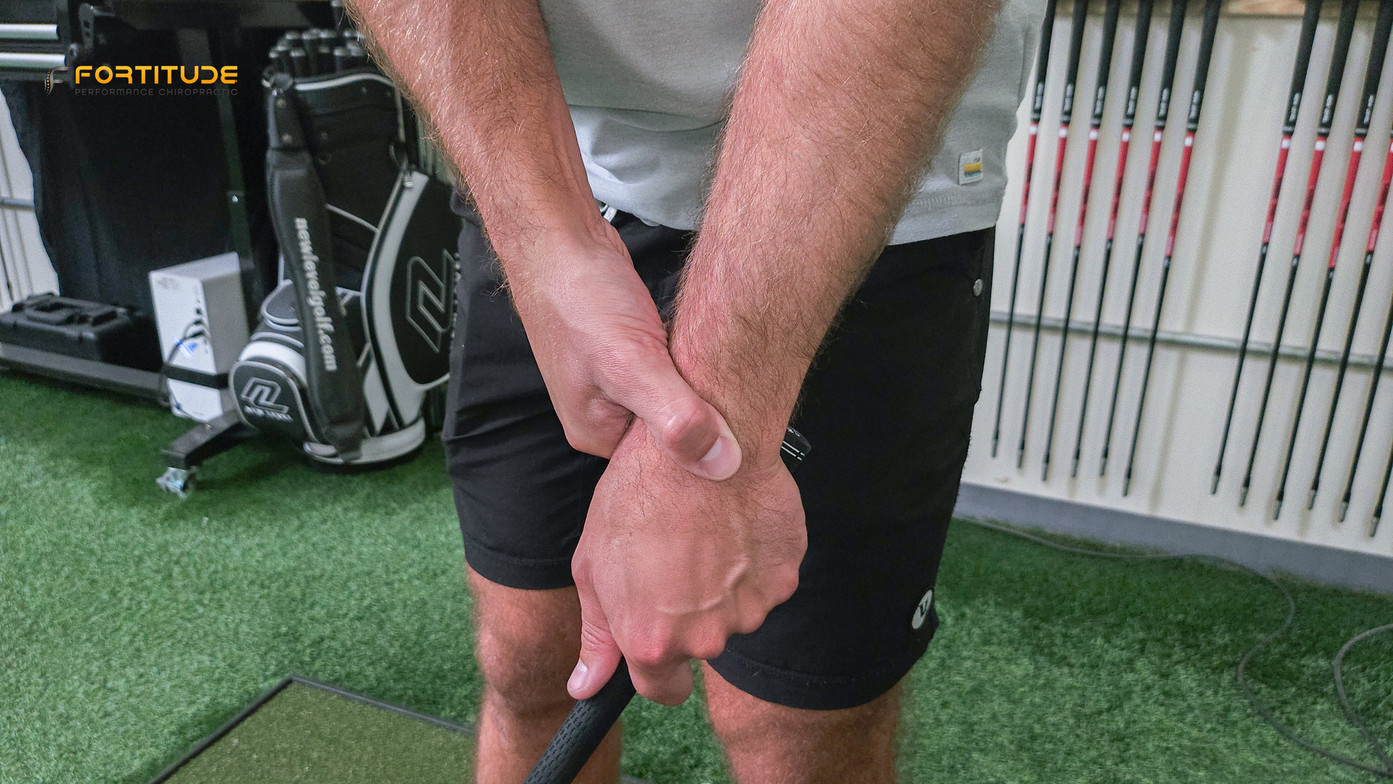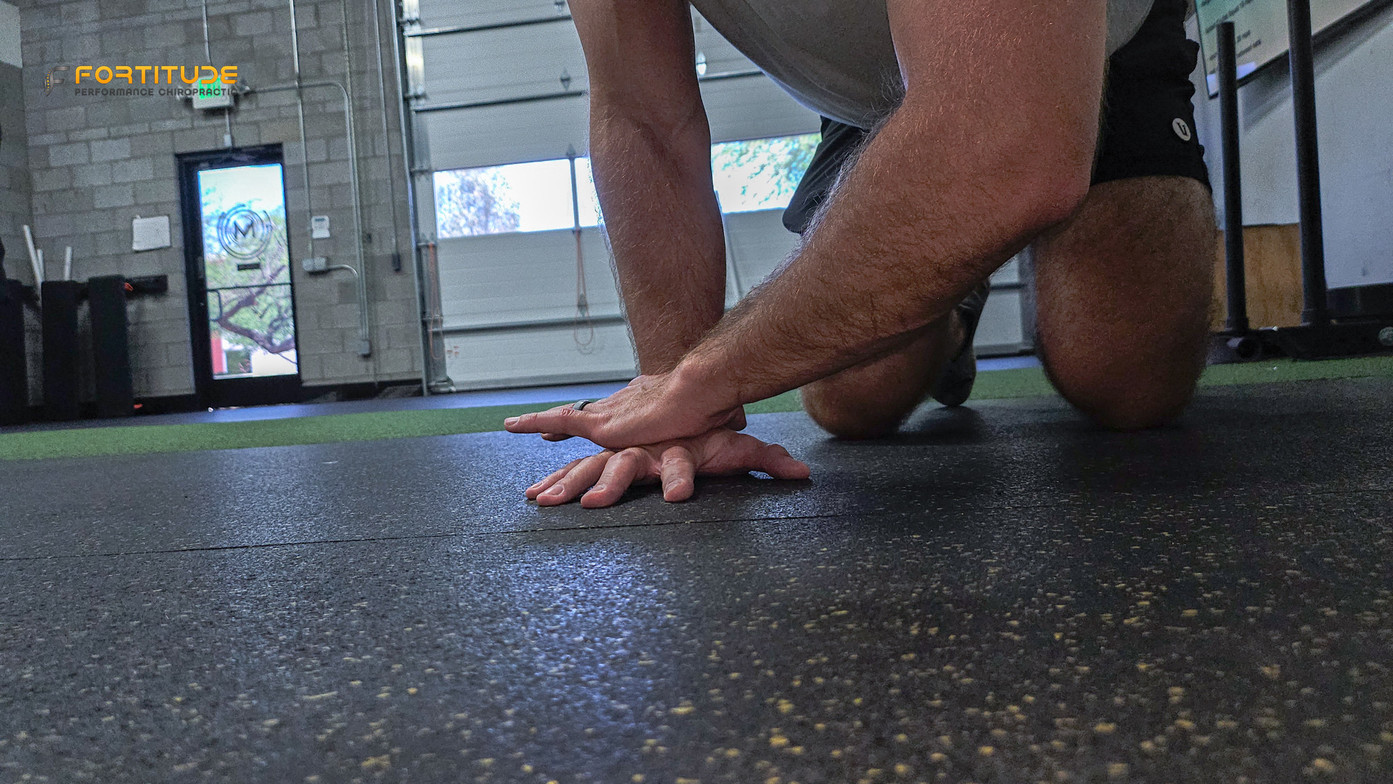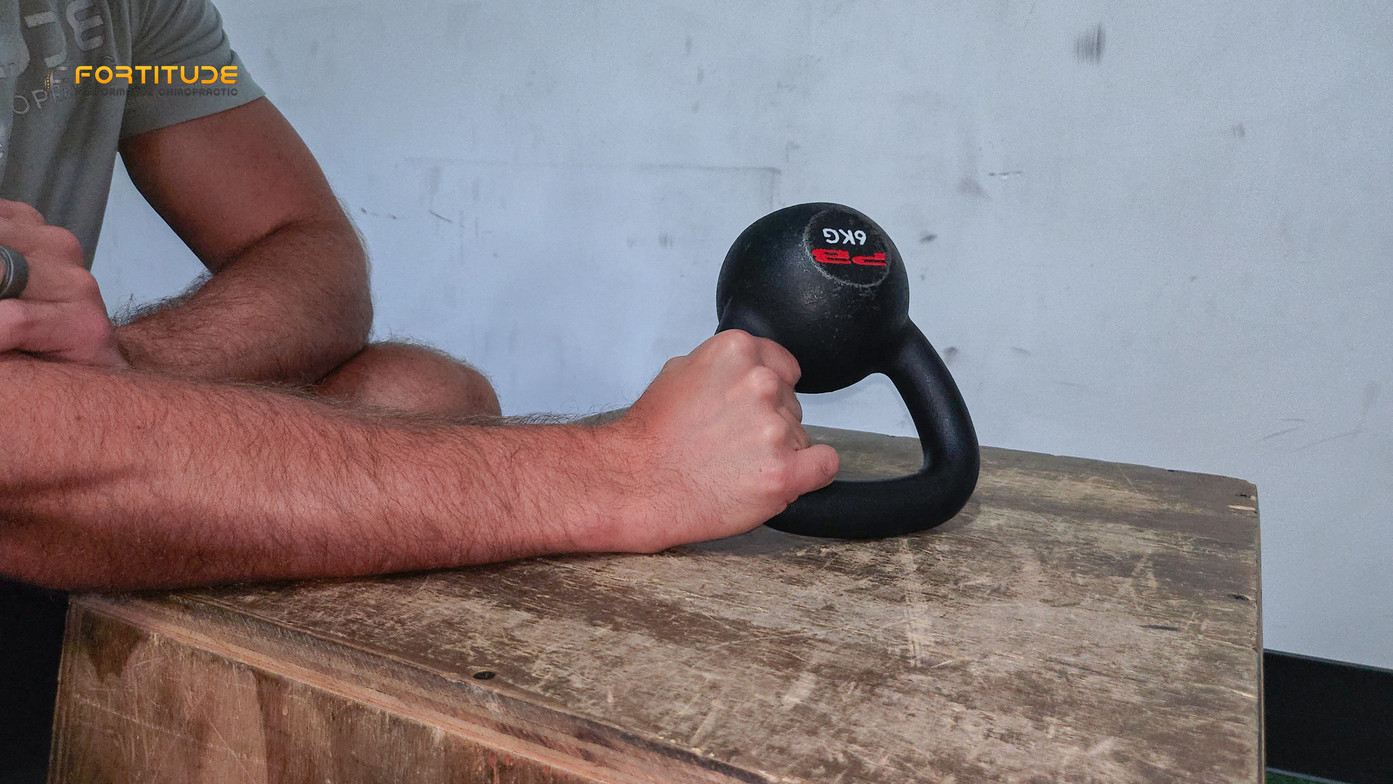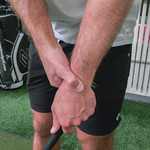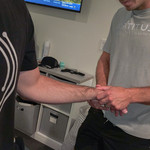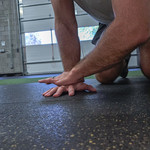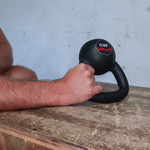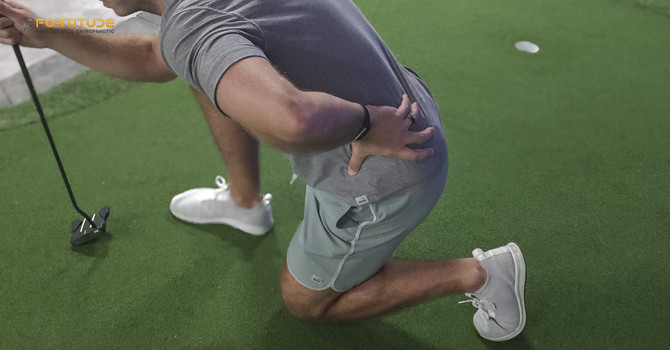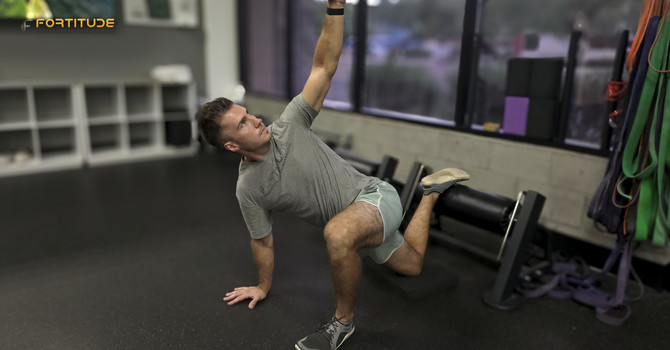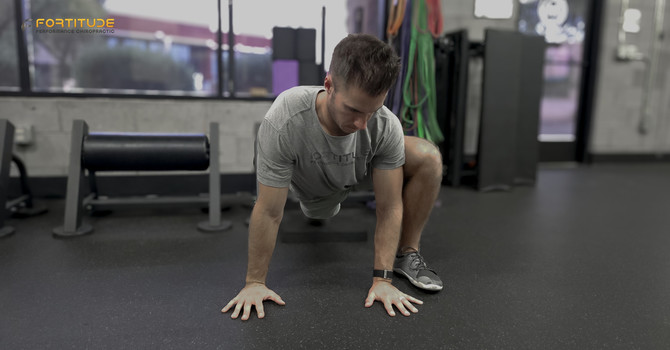Wrist Pain From Golf: What It Means And How To Fix It.
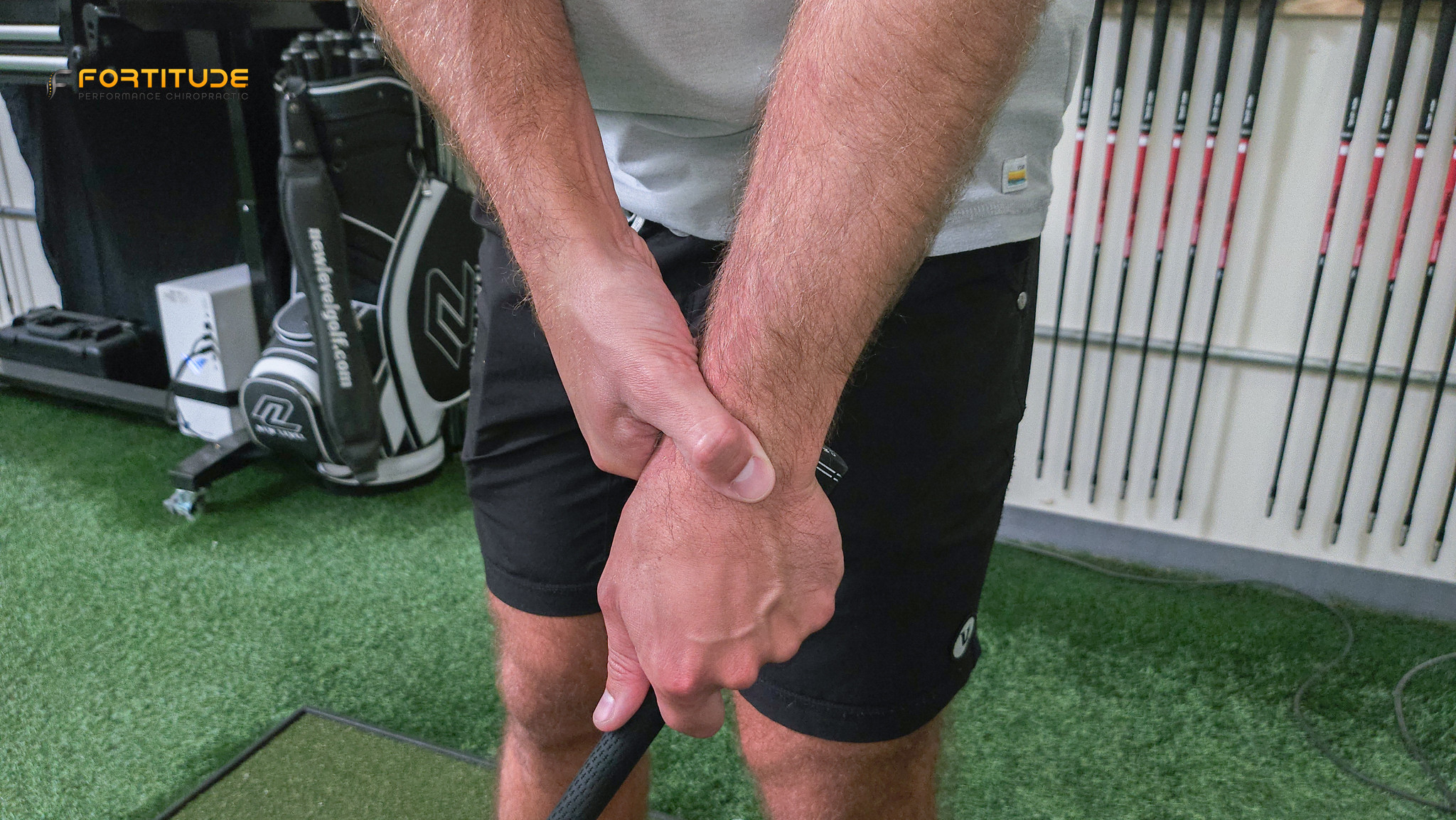
Wrist Pain Getting In the Way of Your Game?
If you're a golfer dealing with wrist pain, you're not alone. It's one of the most common injuries we see in golfers, especially as rounds stack up, mechanics break down, or the body starts to compensate in ways it shouldn't.
But this isn’t just about pain. It’s about what that pain threatens to take away, your consistency, your confidence, and your ability to stay competitive and play the game you love for years to come. Whether it shows up during your swing, after a round, or just from gripping the club, wrist pain can quietly derail performance.
The good news? When we uncover why the wrist is under stress in the first place, we can build a plan to fix it—for good—and keep you playing at the level you expect from yourself.
This blog breaks down:
- What causes wrist pain in golfers
- Why you might feel wrist pain when bending or twisting
- How to treat wrist pain from golf the right way
- What we do differently at Fortitude to help you heal and keep playing
What Causes Wrist Pain From Golf?
Wrist pain in golf is almost always a sign of repetitive stress and poor force transfer through the body. When one area isn’t moving well, like the shoulder, upper back, or core.. the wrist ends up doing too much. Over time, this compensation leads to irritation, breakdown, and eventually pain.
Here are some of the most common causes of golf-related wrist pain:
- Overuse without proper recovery, especially with frequent rounds or practice
- Excess tension in the lead wrist, often from gripping too tightly or poor swing mechanics
- Limited shoulder mobility or a stiff upper back that reduces rotation and shifts stress downward
- Weak grip strength or forearm stabilizers, which leaves the wrist unsupported during impact
- Old injuries that were never fully rehabbed, creating long-term imbalances in strength and coordination
Without addressing the full picture, these small issues add up—and the wrist ends up paying the price. That’s why true relief comes from treating the cause, not just the site of pain.
We had a golfer come in with sharp wrist pain during his downswing—he said it started mid-round and got worse with every swing. After a full assessment, we found that his shoulder mobility was severely limited, especially in external rotation. This restriction forced his wrist and forearm to compensate during his swing, leading to increased stress on the lead wrist. Once we addressed the shoulder dysfunction and improved his swing mechanics, the wrist pain cleared up within a few sessions. This is a perfect example of why golf wrist injuries often start in places you wouldn’t expect.
Wrist Pain When Bending or Twisting: A Sign of Deeper Dysfunction
Wrist pain with bending or twisting is one of the earliest red flags we see in golfers, and it’s almost never just a wrist problem.
It often shows up at key moments in the swing, like:
- The setup position (hinge at address)
- The top of the backswing, when the joints are loaded
- The follow-through, especially under force or fatigue
If you’re feeling sharp, nagging, or burning pain during any of these phases, it’s usually not because your wrist is weak, it’s because something else isn’t doing its job. The wrist ends up compensating, trying to absorb forces it wasn’t built to handle.
That overuse and stress can lead to secondary issues like wrist tendonitis or tendon irritation, especially in the lead hand. Left untreated, this can become a chronic problem that flares up with every round of golf.
Common underlying causes include:
- Poor shoulder control that throws off load distribution
- Weak scapular stabilizers that fail to support arm movement
- A stiff thoracic spine that limits rotation and forces strain downward
- Lack of core stability, making the smaller joints absorb more impact
In golf, pain at the wrist is often a downstream effect of dysfunction elsewhere in the kinetic chain. That’s why surface-level treatments don’t work—we have to go deeper to fix the real problem.
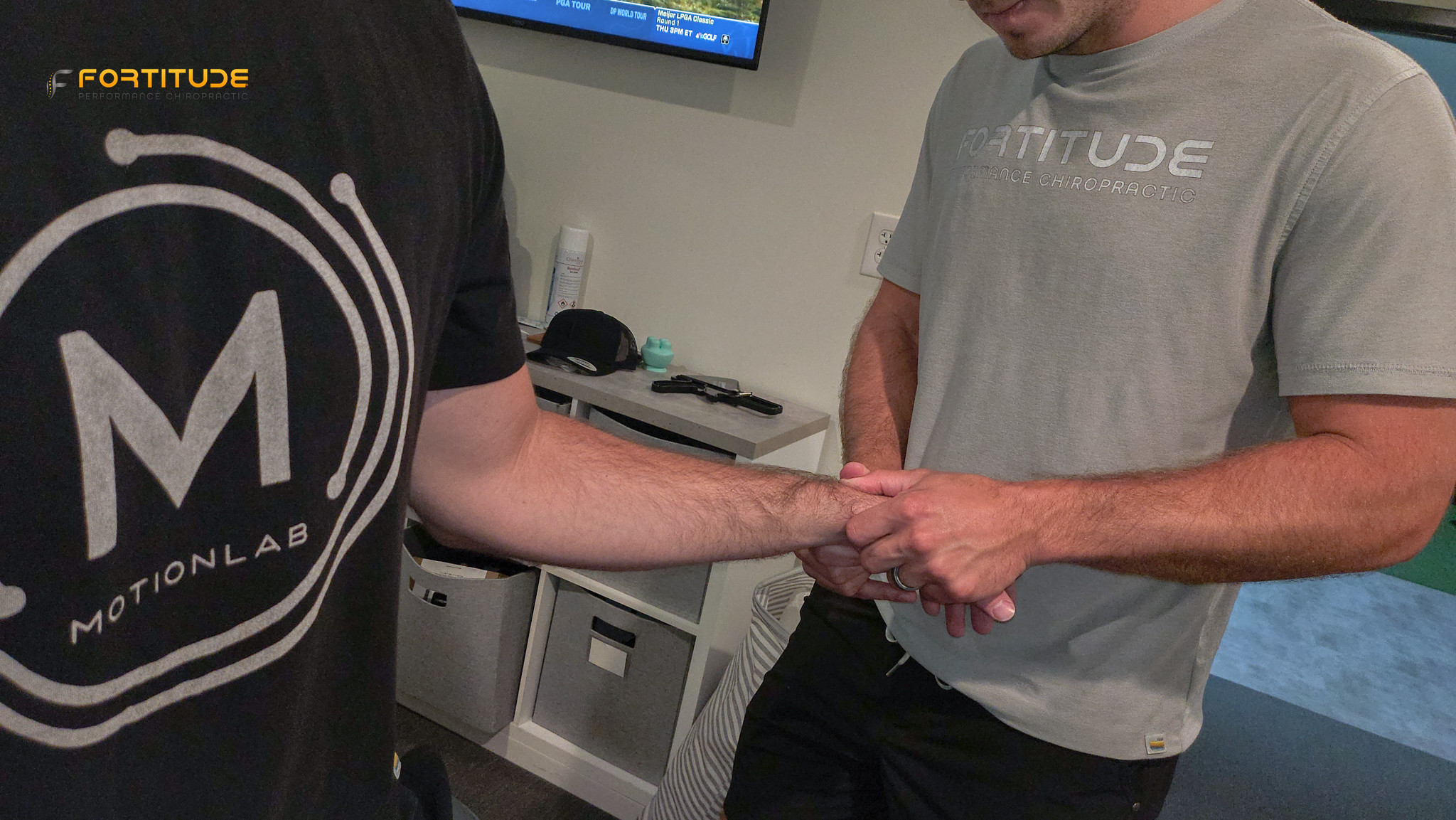
When a golfer comes in with wrist pain during twisting or rotation, we don’t just look at the wrist, we take a full-body approach. That means assessing scapular control, shoulder stability, thoracic spine mobility, and core engagement during rotation. We also break down the golfer’s swing mechanics to see how force is transferring through the body. Most of the time, the wrist is just the symptom, not the problem. By improving scapular rhythm, rotational mechanics, and load transfer through the swing, we help reduce strain on the wrist and prevent future flare-ups.
Why Stretching Doesn’t Work and What to Do Instead
If you’ve been foam rolling your forearms or stretching your wrist with no real progress, this part’s for you.
Stretching might feel good at the moment, but it doesn’t fix the why behind the tightness. And in some cases, it could actually be making things worse.
Most of the time, your wrist is overworking because:
- The shoulder isn’t stable
- The forearm is weak or imbalanced
- The mid-back isn’t rotating properly
- Your setup is forcing unnecessary load into the joint
But here’s what most golfers don’t realize:
If the issue is actually related to a tendon (like tendonitis) or a nerve (like irritation of the radial or ulnar nerve), stretching the area can increase stress and lead to more irritation, not less. These tissues need a very specific approach, one that respects their sensitivity and gradually improves their tolerance to load and motion.
That’s why we never isolate the wrist in treatment. We look at how the whole body moves, test for neural tension or tendon involvement, and build a plan that actually helps your body adapt, instead of just forcing a stretch that doesn’t solve the problem.
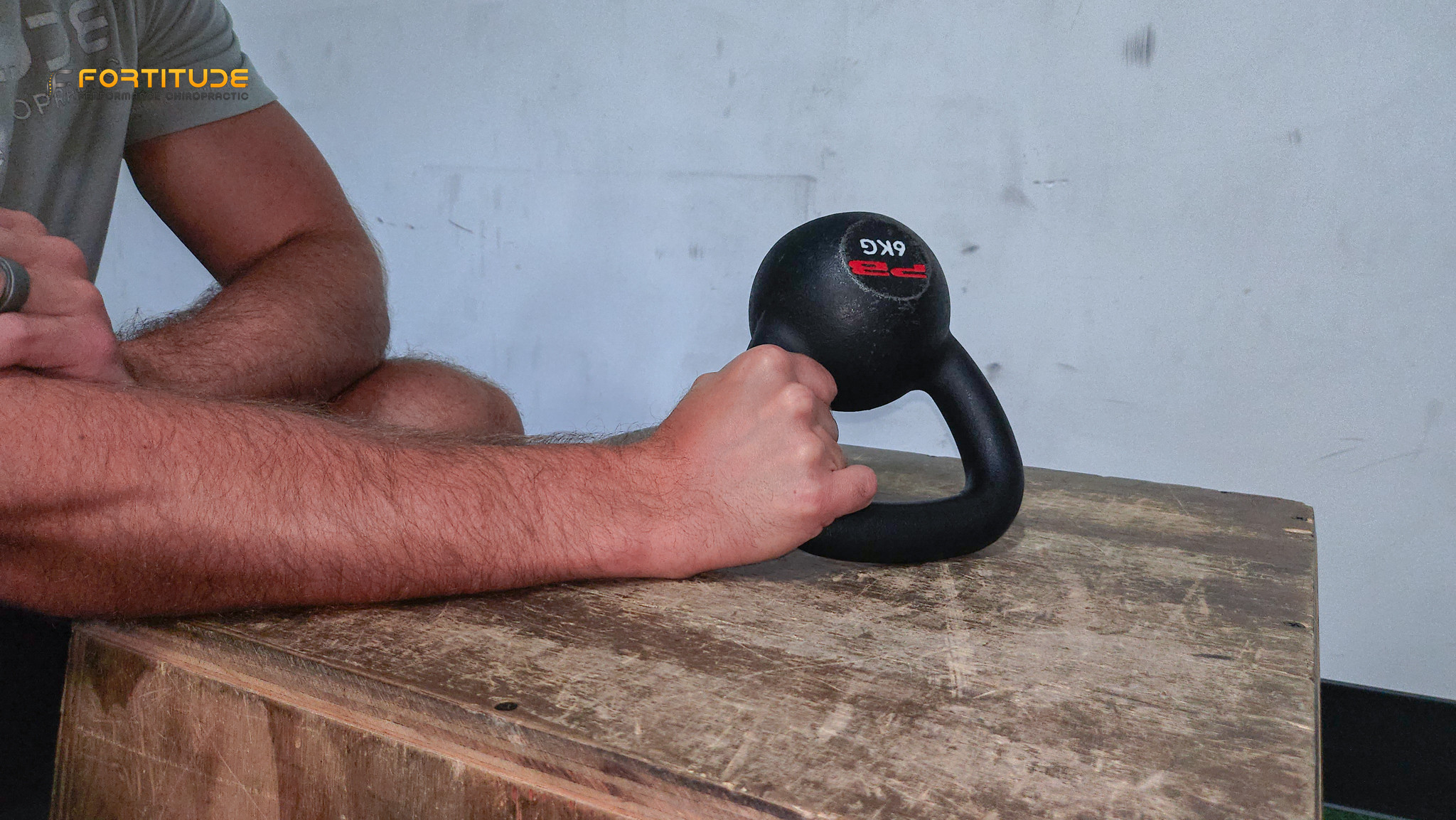
This is where our assessments really stand out. Most golfers come in convinced their wrist pain is the issue—but once we evaluate how they move, it’s clear the problem isn’t just in the wrist. We run a full functional movement assessment to look at shoulder stability, thoracic spine mobility, grip strength, and how the body loads during the golf swing. Our goal is to find the root cause—not just chase symptoms. That’s why our treatment plans don’t isolate the wrist. We integrate golf-specific rehab, chiropractic care, and movement re-education to fix the actual dysfunction and help golfers return to pain-free performance.
How We Treat Wrist Pain at Fortitude
At Fortitude, we know wrist pain isn’t just about discomfort, it’s about what it keeps you from doing.
Missing rounds, holding back your swing, or worrying if your body can keep up, it’s frustrating. And if you're a golfer who takes the game seriously, you know that pain is more than just a nuisance, it's a threat to your longevity on the course.
That’s why we don’t hand out generic rehab plans or short-term fixes. Instead, we create a personalized strategy that looks at why your wrist is hurting and what needs to change to keep you playing for the long haul.
Most golf wrist pain treatment plans include:
- A movement and mobility screen to find the true cause of stress
- Manual therapy for the wrist, elbow, and shoulder to release tension and improve motion
- Strength and control work, especially for grip and scapular stability, to build long-term durability
- Swing mechanic analysis, when needed, to make sure your body isn’t working against you
- A recovery plan that lets you keep playing while we fix what’s holding you back
We don’t just want you pain-free, we want you playing better, moving better, and feeling confident your body can keep up with your goals for years to come.
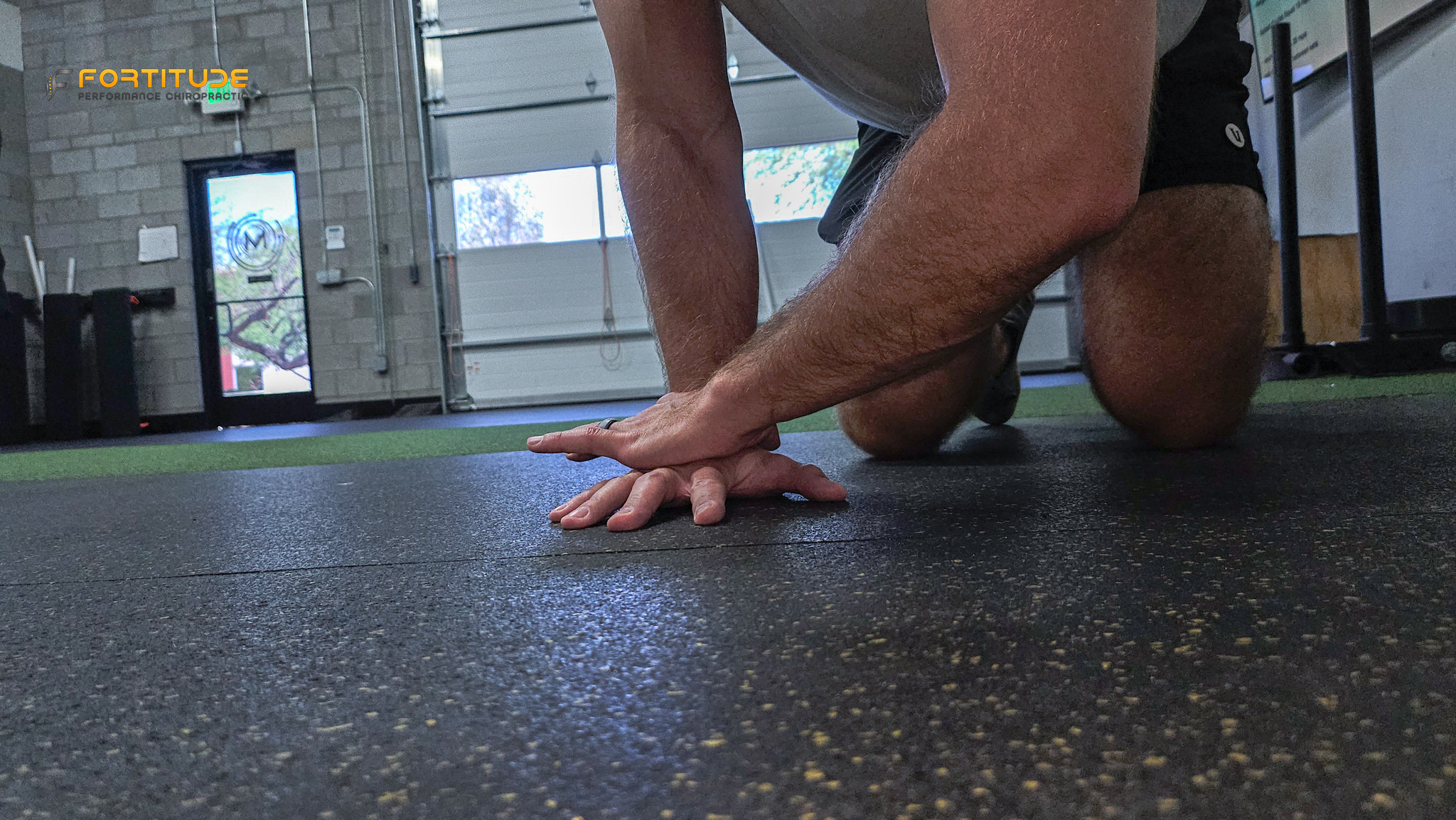
Some golfers need more mobility. Others need more control or power. And sometimes, the missing piece is simply understanding how their body is moving through the swing. That’s why no two golf wrist pain treatment plans at Fortitude look the same. We start with a full movement and mobility screen, then build a custom plan based on what we find—whether that’s improving scapular stability, restoring shoulder range of motion, or correcting swing mechanics. The key is knowing what to prioritize, so each golfer can recover faster, play better, and prevent future injuries.
Frequently Asked Questions About Golf Wrist Pain
What causes wrist pain in golf?
Wrist pain is often a result of overuse and poor movement mechanics, especially when other areas of the body aren’t doing their part.
Why does my wrist hurt when I bend or twist it?
Pain with bending or twisting is often a sign that your wrist is overcompensating for poor mobility or weakness elsewhere, and may be a sign of wrist tendonitis. For golfers, this is a red flag that shouldn’t be ignored, as it often points to deeper issues that need to be addressed right away.
Can I still play?
Usually, yes. Most golfers we treat don’t need to stop playing, we just modify load, swing mechanics, or mobility strategies.
Can a chiropractor help with wrist pain from golf?
Yes, especially when chiropractic care is combined with soft tissue therapy and movement rehab. We don’t just adjust, we help you move better.
Our Approach: Chiropractic + Rehab + Golf-Specific Movement
At Fortitude, we believe in a people-first, performance-based approach to care.
We don’t just chase pain, we figure out why it’s happening and help you fix it for good.
Here’s what that looks like:
- 1-on-1 time with a doctor who listens
- Movement assessments that go beyond the painful joint
- Custom rehab that builds strength, resilience, and confidence
If wrist pain is messing with your swing, don’t wait for it to get worse.
Click here to book a Discovery Call
Or follow us on Instagram @phx_fortitude for more golf tips and clinic footage.
Related Posts You Might Like
How Chiropractic Care Can Help Athletic Performance
Should I Use Ice or Heat?

Fortitude Performance Chiropractic
Contact Me
